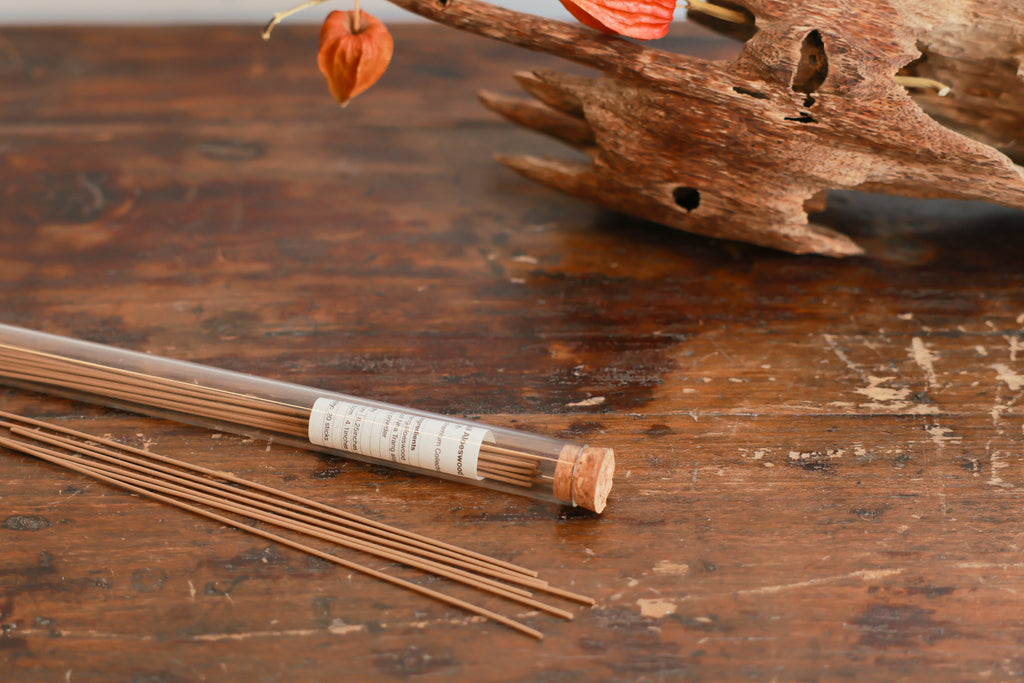
China has a long and rich incense culture, and is a major incense producer in the world today.
As I have written in other posts, the earliest documented use of incense was in ancient China, and the first known Chinese aromatics book written was approximately 2,500 years ago in the Han Dynasty. Since then, a vast repository of literature has been written about the subject, and countless recipes have been developed and refined.
“Incense”, or more precisely the Chinese word xiang (香) also had far broader use than the what we associate with the word incense today. All of the ingredients below had medicinal applications, both in incense form and also taken orally; and many were used as cooking spices, not to mention as perfume for their scent.
There are over 400 types of incense ingredients used in Chinese incense, and over 100 incense blends which are fairly commonly used. While some of these are also found in other cultures, many were fairly unique to China as they depended on local plants. We will try to provide a brief introduction to the most important Chinese incense ingredients here.
To make flammable incense, ingredients are powdered and blended, then mixed with water and formed into shape - this is the traditional art of hand making natural incense. And if you are interested in how to create an incense blend using some of the ingredients below, please check out this article here.
Principal Chinese Incense Ingredients Before Tang Dynasty
There were four types of ingredients that were important for Chinese incense before the 6th century or so: 兰蕙椒桂 , each described in more detail below.
Lan and Hui Flowers (兰/蘭,蕙, Lan and Hui Orchids)
“Lan” flowers have held a special place in Chinese culture for centuries, and it is believed that they’ve been cultivated for palaces and gardens for over two thousand years. They were officially chosen as one of the ten most celebrated flower groups in Chinese culture in 1987. “Hui” flowers are close sisters to the Lan, and have also been cultivated and written about abundantly since ancient times.
It’s slightly tricky to pinpoint exactly what flower sub-species were considered “Lan” vs “Hui” by ancient Chinese horticulturalists, as today both Lan and Hui are collectively classified as orchids. But a famous Song Dynasty poet penned the definition: “A single stem with a single flower and an abundance of aroma is the Lan; a single stem with 5-7 flowers and lacking in aroma is the Hui”, and this distinction remains in use today (it is also a distinction adopted by the Japanese).
Traditional Chinese breeds of both Lan and Hui flowers tended to be in rather subdued colours such as white, green and shades of yellow, and were delicate flowers revered by the upper classes for a sense of restrained elegance and purity, rather than the outright vibrancy of more tropical variations. Their fragrance is also light and sophisticated. In fact, the Lan flower smell became widely synonymous with Chinese aristocratic high morality.


Sichuan Pepper (椒)
The Sichuan pepper is a unique type of pepper native to the south-western
Sichuan province of China. Despite its name, its flavor is not at all like the spiciness of chili pepper or black pepper, and the plant itself is more closely related to citrus than to the peppers.
It is known for creating a tingly numbing sensation in the mouth. These days people mostly know it for the “mala” (麻辣, literally means “numb and hot”) flavors of Sichuan cuisine, where it is used in conjunction with chili – the Sichuan pepper contributes the numbing sensation while the chili contributes the hotness. It was highly desirable as an incense ingredient because it is very aromatic, with an enticing lemony smell.
Sichuan peppers were rare and highly valued in ancient China, often reserved for important gift-giving occasions. Like the Lan flowers, its fragrance was also associated with high morality.

Cassia Cinnamon (桂)
Cassia cinnamon is also called Chinese Cinnamon as it originated in south China. Today it is the dominant form of cinnamon sold in the world and quite widely used, but in ancient times it was rare and highly prized, and like the Sichuan Pepper, reserved for very important gift giving occasions for nobility.
Records of its use in China date back over 2000 years, and it was a principal ingredient for incense blends, as well as important for Chinese medicine and meat preparations for those who could afford its use. Many of us are probably familiar with its smell, a sweet and almost floral like aroma.

Principal Chinese Incense Ingredients After Tang Dynasty
The Tang Dynasty (唐朝, approx. 600-900 CE), followed by Song Dynasty (宋朝, approx. 900-1200 CE) marked a crescendo period in not only Chinese incense use, but the overall economic and cultural development of the country. Influenced by international trade and cultural exchanges, there was a marked shift in Chinese incense taste and ingredients beginning in the Tang.
The four key ingredients described below were not only important for the period, but remain important in Chinese incense culture today.
Aloeswood / Agarwood (沉香)
Aloeswood is often also referred to as agarwood, jinko/ jinkoh (Japanese) or oud/oudh (Arabic). In Chinese, the name literally translates into “sinking wood”. It is in reference to the fact that the fragrant wood is formed when parts of the Aquilaria tree is infected, and produces a dark resin which causes the previously light wood to become extremely dense in the infected region. This dense area is called a “fragrant knot”, and can sink in water. In fact, in ancient times, the degree to which a piece of aloeswood will sink is a sign of its grade – only those that have enough resin and can fully sink can be classified as aloeswood.
In the natural environment, only about 1 in 100 trees will produce a fragrant knot, and only about 1 in 100 fragrant knots will sink in water. The longer the fragrant knot has to mature, the more dense it is likely to be, the more complex the aroma, and the more desirable.
Historically, China’s Hainan island and Guangdong region were producers of premium aloeswood incense. Hong Kong (香港, literal meaning “aroma port”) was also named for its abundance of Aquilaria trees. Unfortunately this is no longer the case as the trees have become scarce in China over time. South East Asia became more fertile ground for high quality aloeswood, and the trading of superior aloeswood moved to the Hoi-An port in Vietnam.
Aloeswood is possibly the most revered classic in Chinese incense culture. Its smell is complex and sophisticated. We have a Hui’an variety in our Select incense collection (Hui’an is Chinese for Hoi-An), which refers to a family of aloeswood from around the Hoi-An port that all used to trade there. It is on the sweeter and lighter side. Aloeswood is a key ingredient for many of our products in the Kin Premium Incense collection.

Sandalwood (檀香)
Sandalwood comes from the Santalum tree. It is a prized incense ingredient not just in Chinese incense culture, but world-over, for its warm, smooth and long lasting fragrance.
There are two prominent types of sandalwood used for incense, the Indian Sandalwood and the Australian Sandalwood. Indian Sandalwood is commonly referred to as “Laoshan sandalwood” (老山檀), which literally translates into “old mountain sandalwood”, in reference to traditional, older sandalwood plantations in Indian. It is typically more expensive as the wood is more mature, and the small is considered gentle but richer. Australian sandalwood, somewhat like its wine, is considered "new world" . Australia is now the largest producer of sandalwood worldwide, and has its own devout following. Its smell tends to be milder, sweeter and more refreshing than its Indian counterpart.
We have both varieties of sandalwood in our incense collection as it is such a well loved fragrance. The Laoshan variety is in stick incense form in our Select Incense collection, and the Australian new-world variety is in cone form in our Backflow Incense collection. Sandalwood is a key ingredient in many of our incense blends.

Camphor/Natural Borneol (龙脑香/龍腦香,冰片)
Camphor is a whitish colored resin which naturally occurs on the wood and bark of the camphor laurel tree, although it can also be obtained from related trees in the laurel family. The trees are native to southern parts of China, and very prevalent in Borneo, thus it is also known as natural borneol.
The most desirable type of camphor is the relatively large, thin slices which are described as “plum-blossom shaped” and “white as snow and ice”. This rare class of camphor is what gives rise to its Chinese names: 龙脑 , literally meaning “dragon brain” – dragons are associated with the Emperor, so this is an indication of the precious camphor’s rarity and value; or 冰片, meaning “ice slices”.
Camphor can also be produced through a process of roasting wood chips or other parts of the camphor laurel tree, and then condensing the vapor, a method that has been practiced since ancient times in China. In the beginning of the 20th century, scientists also discovered the process to synthesis camphor from turpentine, in order to fulfil demand from the chemical industries. But naturally occurring “dragon brain” is still the most prized camphor for incense use.
Camphor has a rather intense, cool fragrance, it is menthol-like and can be nose-tingling. We add it in small quantities to quite a few of our blends, most notably The Four Masters in our premium collection.

Musk (麝香)
Traditionally musk was obtained from the glandular secretions of the musk deer, native to China, parts of North and South Asia, and the middle East. Today it is one of the most expensive animal products in the world. Musk has a long history of use in China, with records of the Chinese word for musk 麝 found on oracle bones dating back over 3000 years (interestingly the character itself is literally made up of two other characters, the top “鹿” meaning deer, and the bottom “射” resembling a human with an arrow trying to retrieve the musk pod).
The musk smell is extremely rich, complex and long-lasting. It is usually described as earthy, woody, and not at all fresh or light. Because of this reason, it is almost always used as a base smell for fragrances.
Today the name has come to encompass a broader array of plants and animal products that have a similar smell. Because the musk deer was historically killed for its musk pod, its numbers have dwindled significantly world-wide, and these other products or synthetic musk have replaced natural musk use in incense. We use musk grass as a substitute in quite a few of the blends in our premium collection.

A musk pod from the musk deer
Are any of these ingredients familiar scents to you? Which is your favorite?

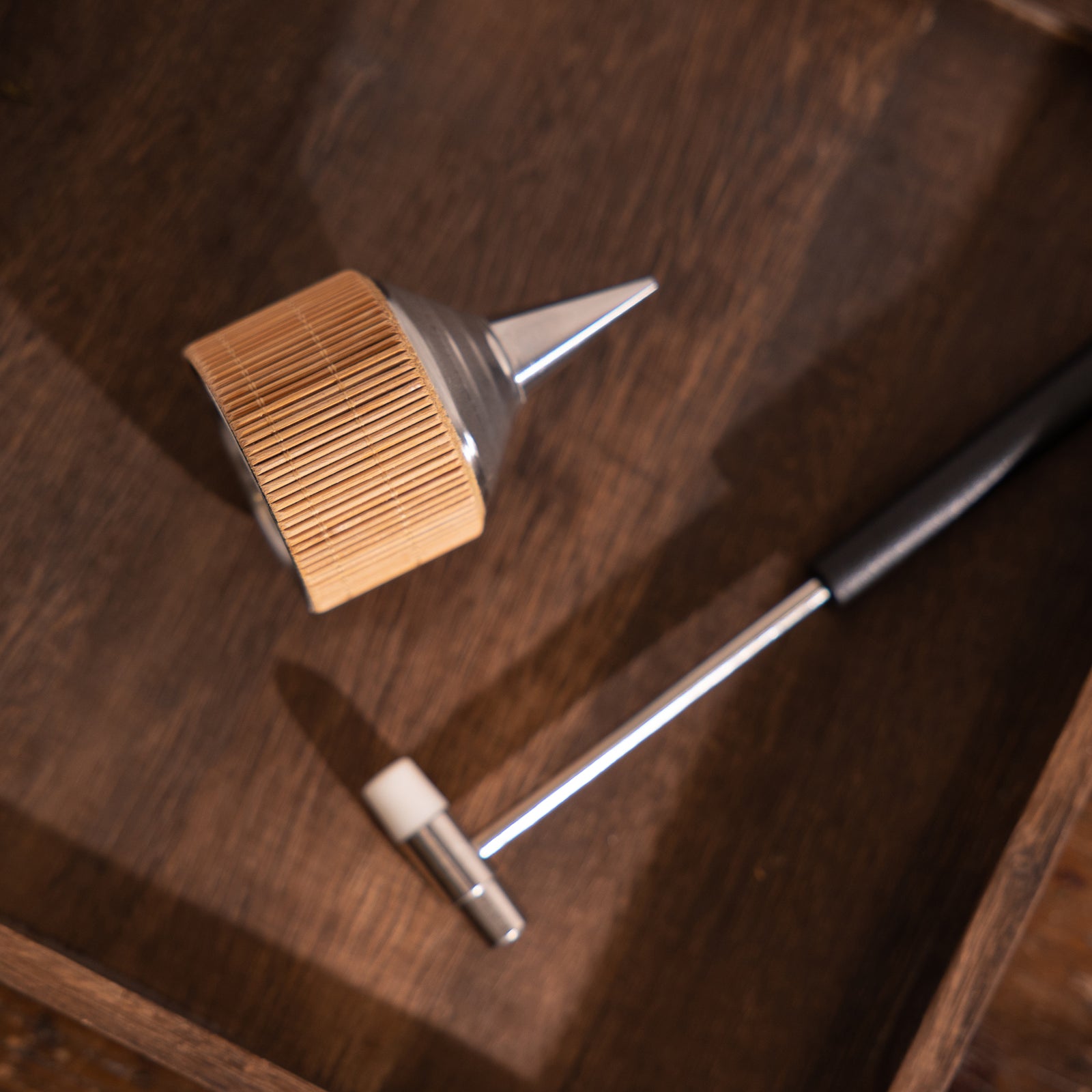
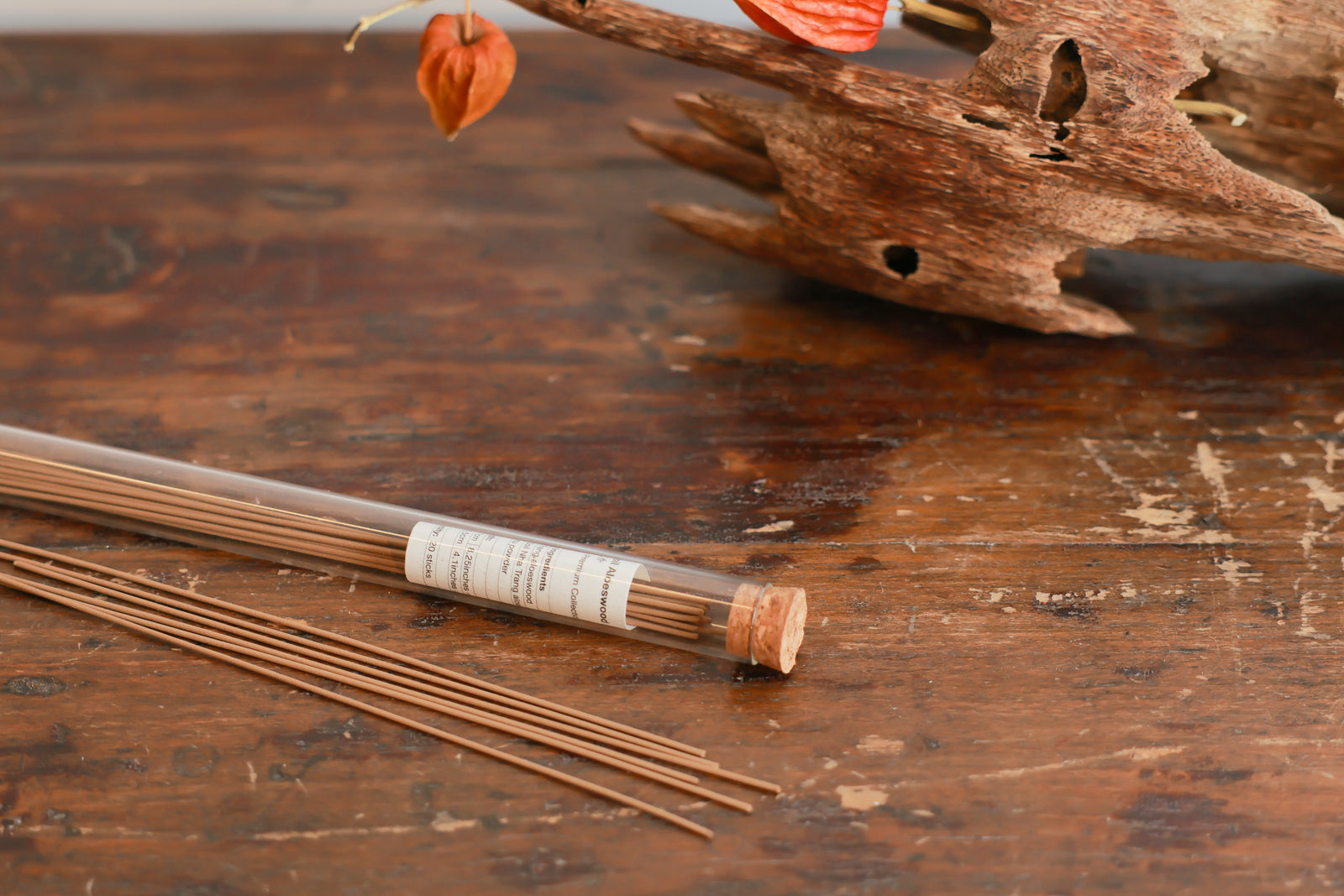
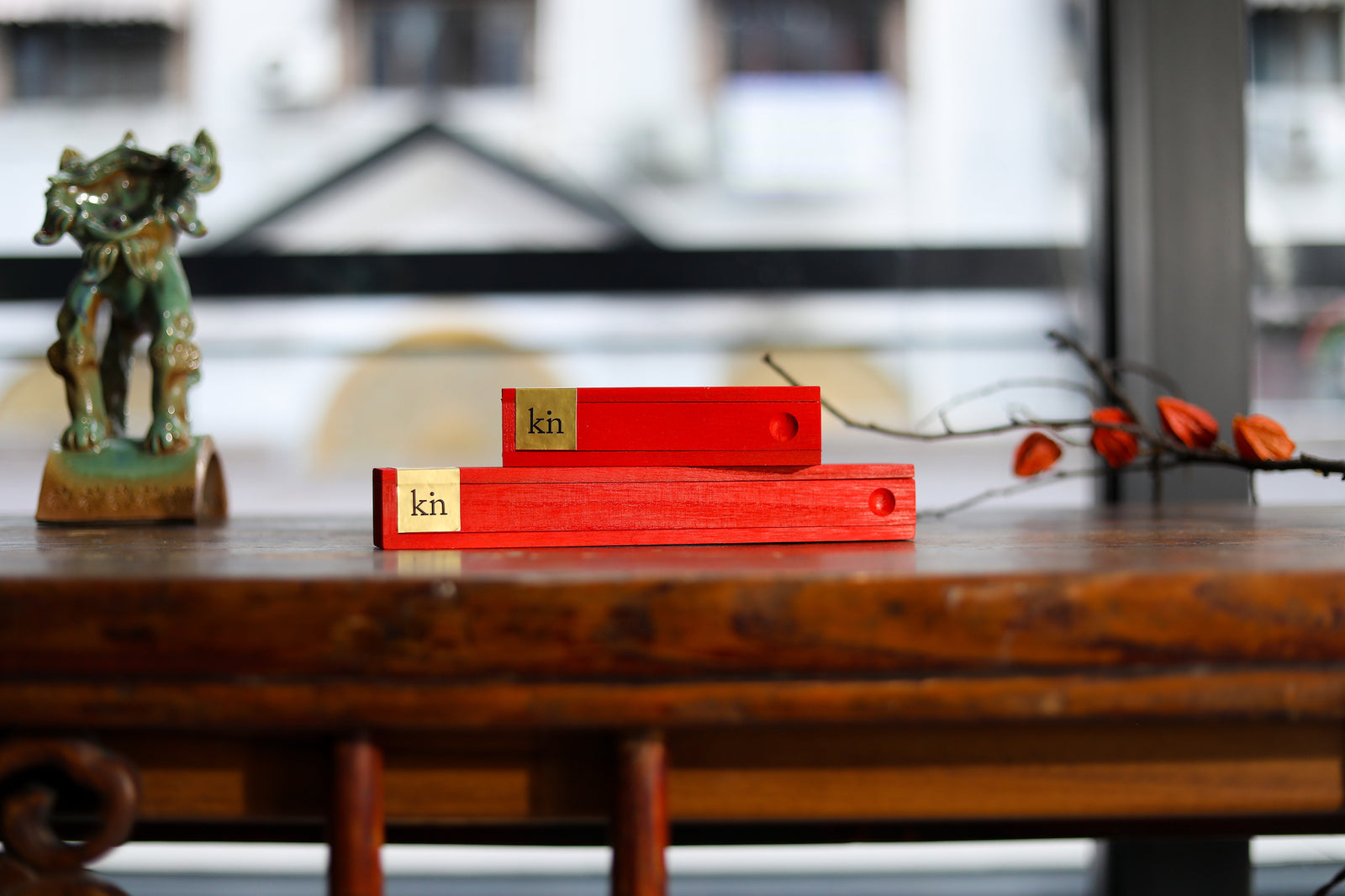

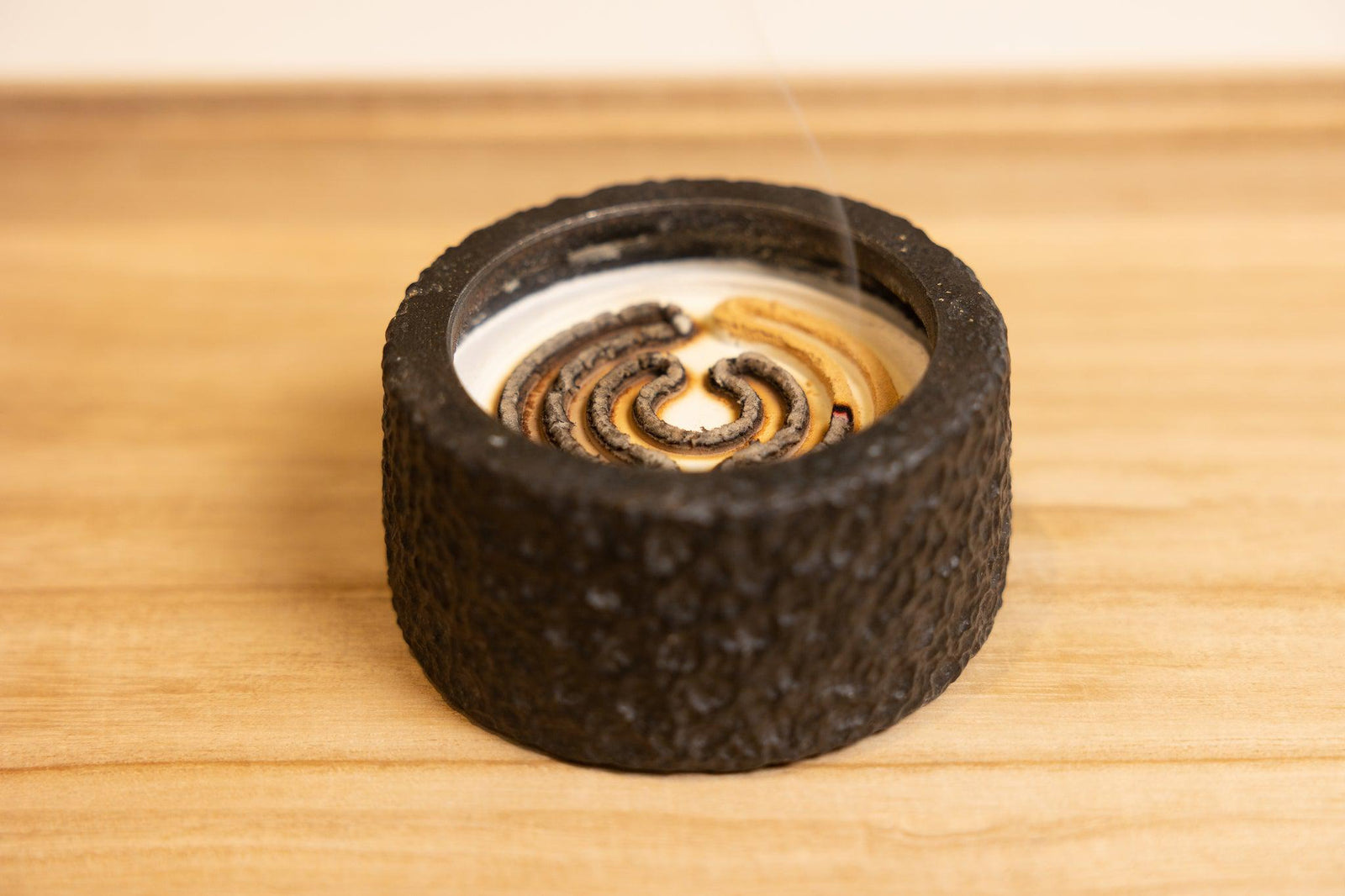
Miranda Yen
December 16, 2023
Hi Garrett,
There are a lot of Chinese incense recipe books that date from previous dynasties. The classic is called Xiang Sheng (香乘), and if you can read Chinese you can search for a copy of it from any reputation book store or online. The recipes in there are not always practical for today, as they use copious amounts of agarwood (in those eras, agarwood was more readily available, and the buyers of incense also tended to be quite wealthy), but they are good starting points for experimenting. These are still the books all Chinese incense makers I know use and reference.
Hope this helps!
Miranda